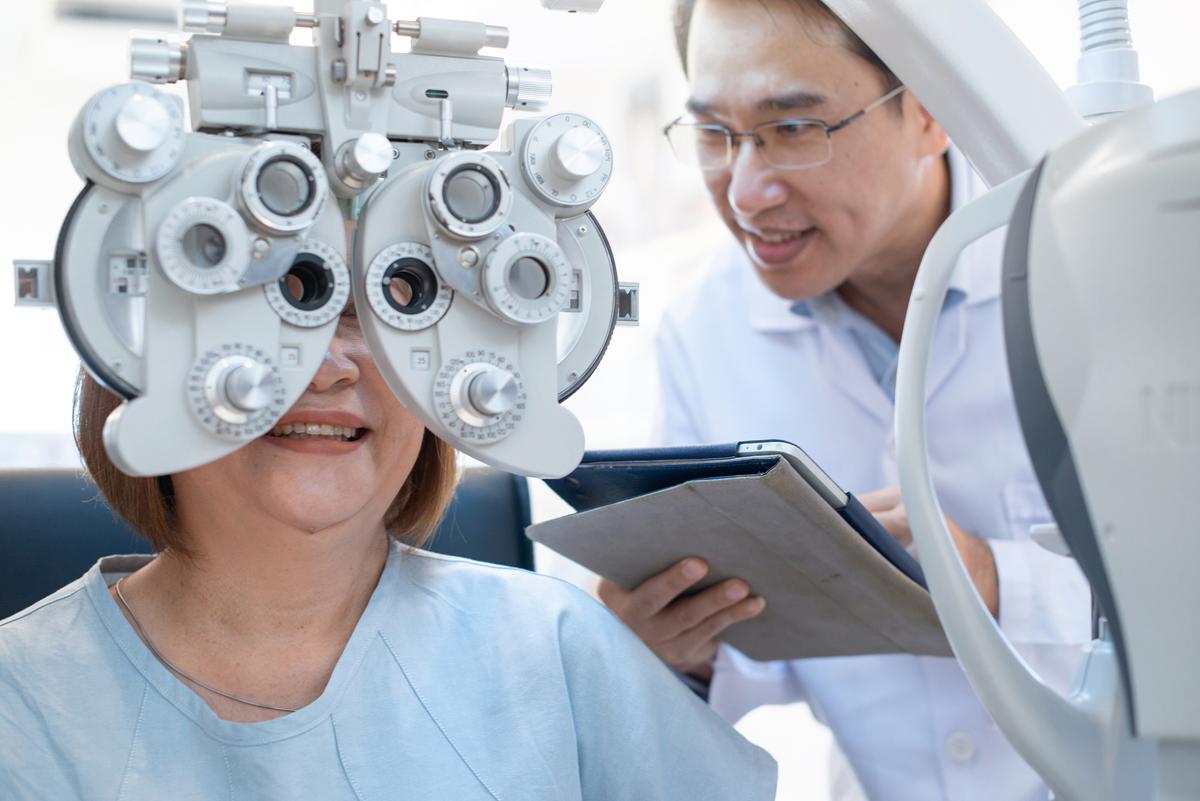Drifting through the diverse universe of our everyday life, have you ever paused to consider the health of our most frequently utilized sense—vision? Or more precisely, have you ever reflected on how dry your eyes feel at the end of the day, after a long bout of staring at your computer screen, or why they feel stinging sensations and noticeable discomfort? If yes, this blog post is distinctly in your wheelhouse. Within the framings of our increasingly technologically focused lives, understanding the causes and symptoms of dry eyes syndrome becomes crucial.
In this comprehensive post, we will unfold the various threads of the occurrence of dry eye syndrome: the what, why, and how. Furthermore, we dive into the depth of its symptoms – understanding them could help us identify potential eye discomfort and act in a timely manner.
Dry eye syndrome or the Dry Eye Disease, as it is clinically known, is a common condition that occurs when your tears aren’t able to provide adequate lubrication for your eyes. While it may seem unassuming, the impacts of this syndrome can range from subtle yet annoying to full-blown severe and debilitating. So, journey with us as we explore this prevalent modern-day condition.
Table of Contents
What is Dry Eye Syndrome?
Dry Eye Syndrome (DES) is a chronic and typically progressive condition that impacts millions globally. It can stem from an imbalance in the tear-flow system of your eyes or environmental factors. Prolonged exposure to digital screens, air conditioning, and even certain medications could invite the occurrence of DES.
The true understanding of DES lies in the comprehension of its causes and identifying its symptoms. Persistent dryness, a burning sensation, red eyes, and even watery eyes can all signal DES. Hence, it’s essential to grasp its often-paradoxical nature.
Being informed about this syndrome can enable us to make more conscious lifestyle choices and adopt eye-friendly practices, promoting overall eye health. Having regular check ups and consultations can help in discovering the exact issue and procedure for it. For example, treatment options such as EVO ICL can be beneficial in providing relief and reduce dependency on corrective lenses. With consultations, individuals can figure out the most effective treatment plan for their specific needs.

Predisposing Elements of Dry Eye Syndrome
Several factors can make you more susceptible to DES. Aging is one such considerable factor; DES is more common in people aged 50 and above. Your gender can also play a role, with women being more prone to DES, due to hormonal changes.
What about our routines? Long hours of computer use can cause us to blink less, which might hamper our eye’s natural moisturizing process. Noticeably, even our climate and surroundings (windy, dry, or smoky environment) could influence the condition of our eyes.
Knowing these contributing elements provides us with a fuller picture of the risks, helping us to prevent and manage DES more efficiently.
Unveiling the Symptoms of Dry Eye Syndrome
The manifestation of Dry Eye Syndrome lies in the subtlety of its symptoms. Dryness and a stinging sensation could be the most apparent signs. However, other indicators include sensitivity to light, redness, watery eyes, blurry vision and a feeling of something being ‘stuck’ in your eyes.
Understanding these symptoms offers us the opportunity to appropriately and timely address the discomfort, ensuring our lifestyle remains unaffected and our productivity unhampered.
The Twisted Reality of Technology and DES
As our reliance on technology grows, so does the prevalence of DES. Persistent exposure to digital screens causes less blinking and eventually leads to dry eyes. Working in air-conditioned spaces also diminishes the moisture in the air, contributing to DES.
In this context, it’s crucial to evaluate our tech usage habits and make necessary adjustments, ensuring our eyes are not paying the price for our technological advancement.
Pros and Cons of Treatments for Dry Eyes
The options for treating dry eyes range from lifestyle changes to medications, and even surgical methods for severe cases. The upside, of course, is that these treatments can help alleviate your discomfort and improve vision. But, they aren’t entirely without downsides. Medications might come with side effects, and surgical methods entail risks and potential recovery time.
It’s essential, therefore, to weigh the pros and cons, aiming for treatments effective in your specific situation, and aligning with your comfort palette.
The Road to Preventing Dry Eye Syndrome
While some causes of DES can’t be changed or controlled, other aspects can certainly be influenced, such as modulating technology use, considering your eye’s health in your space planning, or using eye lubricants if necessary. Regular eye check-ups are also an essential prevention strategy, enhancing early detection.
In addition to this, adding tools like a heated eye mask can provide relief by improving tear production and soothing the eyes. This can be useful after long hours of screen time or exposure to dry environments. Navigating the eye health landscape with an understanding and knowledge about the elements of DES allows us to have improved control over our visual comfort and overall well-being.
Conclusion
In the grand ballroom of life, dealing with Dry Eye Syndrome might seem like a solo waltz with discomfort. Yet, armed with the understanding of its causes and symptoms, we are better prepared to intercept its impact on our daily lives. Awareness of the ailment, we realize, is the first step to stave off the worry of DES taking a toll on our productivity and peace. As we navigate the eye health landscape, a vision-friendly lifestyle can indeed make a world of difference. Comfortable eyes translate into a comfortable life – let’s pledge for that.
- How Primary Care Doctors Are Your First Line of Defense - December 23, 2024
- Live-In Caregiver Jobs: Providing Support, Building Bonds - December 19, 2024
- Caring for Your Porcelain Veneers: Tips for a Lasting Smile - November 12, 2024
